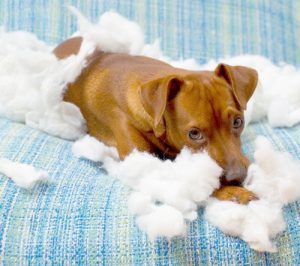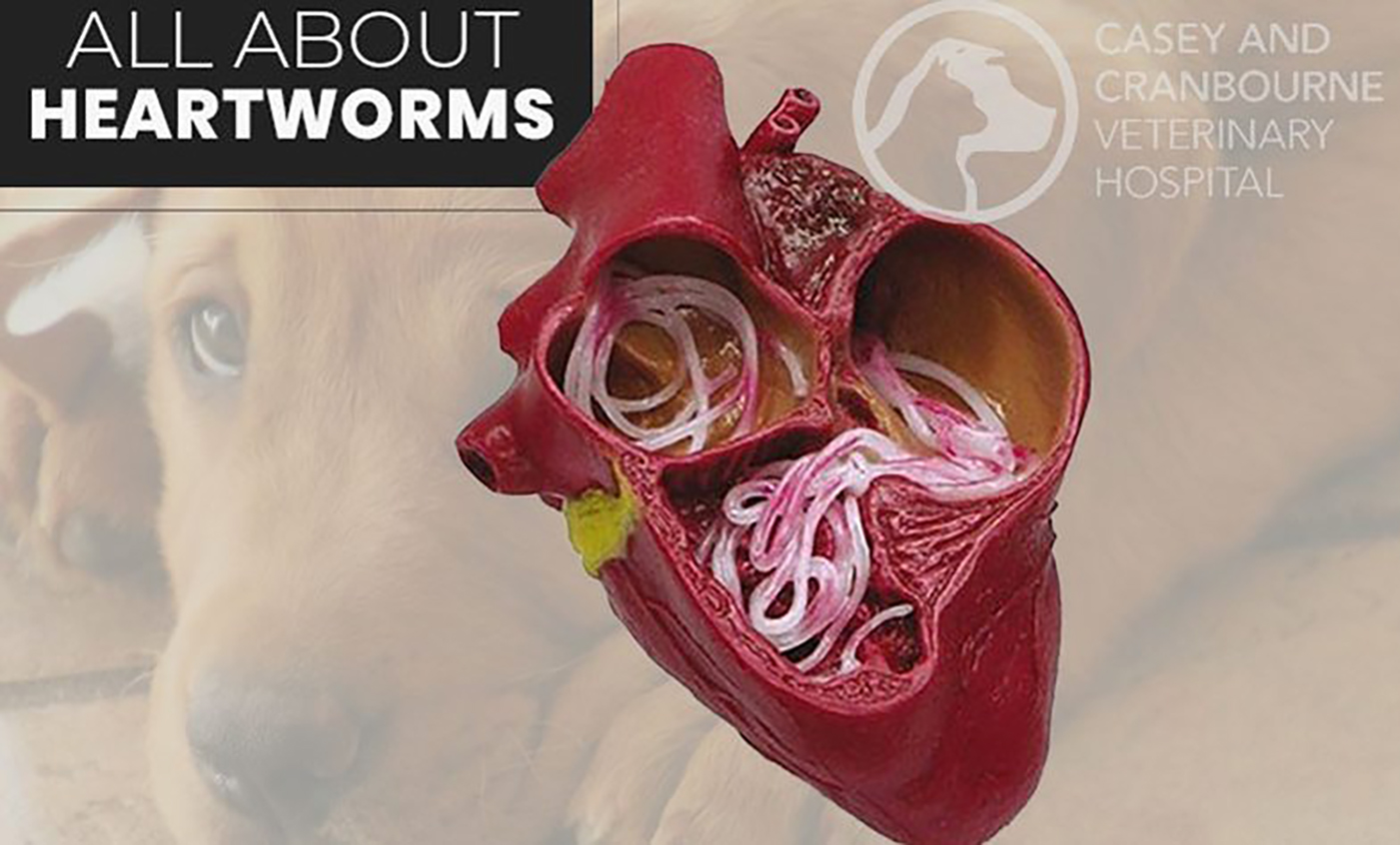This week will focus on why puppies mouth/chew and how to provide environmental enrichment to prevent unwanted behaviour, with hints and tips that are useful for puppies and adult dogs alike.
If puppies become bored in their environment they may chew and destroy items, dig or bark constantly. By enriching a puppy’s environment, owners can provide enough physical exercise and mental stimulation to alleviate boredom and the associated anti-social behaviour.
Mouthing/chewing
Although it is normal and natural, mouthing and chewing can present a problem to owners and may lead to biting and chewing of unacceptable items.
There are a few reasons your puppy is chewing, it’s usually boredom or sometimes can be anxiety. They will also chew hard items (like wooden furniture) when their mouths hurt and they are trying to relieve the teething pain. Just like toddlers pick up everything, young puppies chew/mouth on everything because they can’t pick them up with their hands, instead they use their mouths to taste everything, they’re learning about their new home.
Even most adult dogs enjoy a good chew, and this is really evident when they are given a raw bone, rawhide chew, pigs ear or other appropriate chew. Chewing (on appropriate items, of course) is also an essential part of good dental hygiene.
Puppies need help to learn which objects are acceptable or not for mouthing, biting and chewing. If the puppy picks up an item that is not designated as a chew toy, it is best not to punish or chase after your puppy as this can be mistaken for a game. Instead, call the puppy calmly and swap the item for something that is OK for them to play with, chew and destroy, e.g. a toy or treat.
Never use hands or fingers as “toys”, this will encourage them to bite and jump up at your hands and may present a serious problem in the future when socialising with other people and pets.
Teach your puppy to ‘leave’ or ‘give’ items. This will make swapping items easier.
Always provide your puppy with suitable toys that will encourage them to only chew that toy and reward them for playing with these by praising and/or by playing.
Puppies should be supervised with some of these devices/toys as they make break or splinter. Toys should be checked regularly for damage and replaced to ensure that the puppy does not hurt themselves. Just leaving a toy out may not be enough, show your puppy how to play with the particular toy and offer positive praise when they use the toy to chew on and play with.
So what types of things are appropriate for your pup to chew on?
Given that chewing is totally appropriate and even to be encouraged, we need to provide puppy with appropriate toys and food to chew on. Toys like a Kong, which is a re-usable rubber toy with a hollow centre into which you can stuff all kinds of treats and food are ideal because your puppy will be rewarded for chewing this toy when food comes out. Kongs are such a versatile toy and can be filled with a variety of different things to keep your puppies busy and not become bored with the same treat.
The most common fillings for Kongs are:
- Peanut Butter or vegemite (ensuring the peanut butter does not contain the artificial sweetener called xylitol as it’s extremely toxic to dogs)
- Dog biscuits or treats
- Carrot Sticks wedged in at different angles
- Another good option is frozen treats! They’re especially good when teething as it soothes the sore gums. You can either place the kong into icecream containers and pour in broth or stock (without onion or garlic as these are also toxic to dogs) half way up the kong and then freezing, or freezing the broth into ice cube trays and putting the ice cubes into the kong.
- Need any more inspiration? The kong website has many more Kong recipes.
Rawhides chews, raw meaty bones (always RAW never cooked), pigs ears, nylabones, dentabones and dentastix are all suitable for dogs and puppies to chew on. You should always try to match the size of the item to the size of the dog ie. small dog = small bone. Always remove any fat from any bones including the marrow of those long marrow bones, this can be easily scooped out with a spoon. Occasionally, in some dogs, bones can cause digestive upsets, in these cases bones are best avoided and the dog should be provided with other chew options. In addition to the suggestions above a variety of other toys can be provided for your puppy. We also don’t recommend feeding raw chicken necks/wings to puppies or adult dogs as there is a potential link between dogs eating raw chicken and developing paralysis (this is from a study that has come out of Melbourne University.)
Tip: Don’t leave all the toys out all the time though as your puppy will tend to ignore them if they are always available. Offering a different toy each day will keep your puppy interested. Treat balls and Buster cubes whilst not chew toys, keep your puppy occupied because your pup learns to roll these around to allow food to drop out. These are excellent toys for times when your puppy is going to be left alone for a long time, like, when you are at work. Make sure you’re providing a good rotation of other toys to chew as well, because if you don’t rotate toys to keep them exciting or don’t provide any, then your pup will choose it’s own ‘chew toys’ and these are often the exact things we don’t want them chewing on!
 Ways of getting your puppies away from chewing the unwanted things
Ways of getting your puppies away from chewing the unwanted things
Garden beds and potted plants are often a common issue for new puppies to chew on. For potted plants move them away during their ‘puppy phase’. Set them up for success! Don’t leave all these wonderful potted plants around for them to sample and be surprised when they do exactly that. In terms of garden beds, fence off any garden beds that your pup is paying particular attention to, this is not forever, this is just while they’re passing through the mouthing phase.
Door frames and furniture are also common things that your puppies want to chew on. Pet shops have lots of deterrent sprays but citronella spray or a little bit of Vick’s works too.
Environmental enrichment for puppies and adult dogs
Dogs are social animals and it’s essential for puppies and adult dogs to have quality interaction with their human family every day including going for walks, playing, training, grooming or just sitting and being patted.
During the current Covid-19 pandemic, family members are more likely to be working from home and also home schooling, so puppies have lots of opportunities for play time and walks to keep them stimulated. Once lockdown ends and family members return to work and school, puppies may be home alone during the day which means they may be left to their own devices for hours each day. This excess time can result in under stimulation, boredom and problem behaviours e.g. digging, barking and destructiveness.
We as owners need to provide our dogs with both physical and mental stimulation to keep them happy and to improve their wellbeing.
Toys and Food Dispensing Toys
There are many extraordinary dog toys available on the market suitable for most breeds and jaw strength. Be creative, hide them in different places and check when you get home, did they find them? Rotate your dog’s favourite toys regularly so they don’t become bored with them.
Food Dispensing Toys are a fantastic invention and are a great way to provide mental stimulation. Don’t waste the opportunity putting your dog’s food allowance in a bowl, place it in a Buster cube, kong or treat ball, dog’s really enjoy working for their food.
Homemade toys
Here are a few ideas to make some toys out of items you already have around your home. Using milk cartons, cereal boxes, egg cartons, plastic milk or juice bottles and old t-shirts. Always supervise your puppy or adult dog when they are chewing on home made toys and remove them if they start swallowing pieces of the toy.
- A plastic milk or juice bottle (with lids and plastic rings removed) wrapped in a t-shirt. Do not use PET plastic (thin plastic used for water bottles etc as they can splinter)
- Placing treats in egg cartons to rip and destroy
- Hiding treats in cereal boxes, then tape the box closed with masking tape.
- Fold in the ends of toilet rolls and place treats in the middle like a parcel for them to destroy.
 A Digging Pit/Sand Pit
A Digging Pit/Sand Pit
Why do dogs dig? For several reasons – burying bones, keeping cool, escaping confinement and to dig for odours and sounds that attract them beneath the ground. It is a natural behaviour and the best approach is not necessarily to stop the digging, but to contain it. Giving your puppy a digging pit of their own can help fulfill their need to dig and limit the damage done to the backyard. Using a child’s wading pool or clam shell filled with sand or dirt will help stop your dog landscaping your backyard. Additionally, burying bones, toys and other treats for the puppy to discover will reward them for digging in this area rather than other places in the back yard.
A Little Tip: On hot days water down the sand or dirt to help keep them cool.
A Wading Pool
A wading pool is a great idea for dogs who adore water to keep them cool and entertained on those hot days. Remembering not to fill it too deep, but just enough for the dog to be able to get its belly and paws wet. Putting toys and treats into the pool, freezing their favourite toy into an ice block and throwing it into the pool to push around until it melts will keep them entertained for hours!
Treasure Hunt
Don’t underestimate how important a dog’s nose is to them, that is one reason why dogs like sniffing on their walks, all those new smells. You can provide various stimulation around the home too; use safe items with different smells to hide around the yard or scatter their dry food over the lawn or leave a scent trail with food to their toys at the end.
Iceblocks/Homemade treats
Delicious ideas for hours of enjoyment! Place rawhide, toys, chicken necks, liver treats, bones and vegetables in an ice cream container filled with water or chicken stock and freeze, as the ice melts many wonderful surprises will appear. Another idea is to cut the hook off one end of a bungee cord, make a frozen treat in a plastic cup and place the non-hook end in the treat and freeze, once frozen hang the bungee cord from a tree or under the veranda for them to enjoy.



